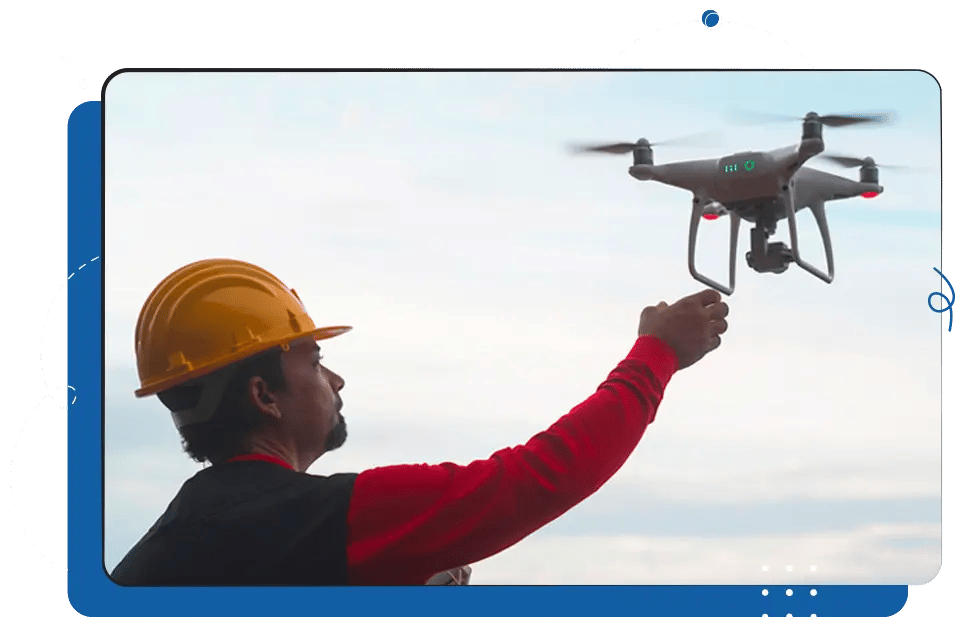CTE Curriculum
Prepare learners with CTE curriculum aligned to industry standards.
About the Course
The UAS Remote Pilot Certification (FAA Part 107 Training) course provides students with knowledge to gain a certification through the FAA. Throughout this course students will progress through lessons which will provide them with certification content and example questions containing content which could show up on the certification exam provided by the FAA.
SAMPLE LESSON
Airport Operations: NOTAMs & TFRs
Each lesson includes media-rich presentations, a pre-made lesson plan, assessments and engaging real-world projects and activities. To get an idea of what iCEV offers, explore the sample lesson and resources below.
Lesson Resources:
Lessons Available in This Course
- Airport Operations: Airport Traffic Patterns, Flight Frequencies & Best Practices
- Airport Operations: Longitude/Latitude & NM/SM
- Airport Operations: NOTAMs & TFRs
- Airport Operations: Tall Obstacles & AGL vs. MSL
- Airport Operations: VFR Sectional Chart Symbols
- Airspace Class & Op Requirements: AGL, MSL, Military Training Rts & Airspace
- Airspace Classification & Operating Requirements: Aero Sect Chts & Class of Airspace
- Airspace Classification & Operating Requirements: Notices to Airmen & Temp Flight Rest
- Airspace Classifications & Operating Requirements: Airspace Designations
- Aviation Weather, Effects & Sources: METARs & TAFs
- Aviation Weather, Effects & Sources: The Knowledge Test & Weather Factors
- Aviation Weather, Effects & Sources: Thunderstorms, Visibility & Clouds
- Aviation Weather, Effects & Sources: Weather & Time Zones
- Aviation Weather, Effects & Sources: Weather Briefs & Stable vs. Unstable Air
- Aviation Weather, Effects & Sources: Wind, Friction, Masses, Fronts & Wthr Forms
- Crew Resource Management: Contingency Reactions
- Crew Resource Management: Decision-Making, CRM Effectiveness & Hazardous Attitudes
- Crew Resource Management: Physiological & Medical Factors
- Drone Theory & Aeronautical Basics: Aerodynamics & Newton’s Laws of Motion
- Drone Theory & Aeronautical Basics: Drone Components
- Drone Theory & Aeronautical Basics: Drone Summary
- Drone Theory & Aeronautical Basics: How Multicopters Fly
- Drone Theory & Aeronautical Basics: Mechanical Design Airplane & Three Axes of Flight
- Drone Theory & Aeronautical Basics: The Four Forces of Flight
- Emergency Flight Procedures: Battery Fire Procedures & Accidents
- Emergency Flight Procedures: Lost Link & Fly-Away Procedures
- FAA Knowledge Test Review
- Maintenance & Inspection Procedures: Inspection
- Maintenance & Inspection Procedures: Maintenance
- Maintenance & Inspection Procedures: Record Keeping
- Pathway to Certification: A Closer Look at Part 107 Certification
- Pathway to Certification: Current Uses & Future Potential
- Pathway to Certification: Recreational & Commercial Use
- Pathway to Certification: Regulating Airspace
- Radio Communications: Chart Supplements, Sectional Chart Frequencies & Making Repts
- Radio Communications: Proper Radio Procedures
- Reg & Op Rules: Authorization & Operation
- Reg & Op Rules: Daylight Operation Regulations & Visual-Line-of-Sight
- Reg & Op Rules: Documentation for Flight & Registration Requirements
- Reg & Op Rules: Eligibility for Part 107 Certification
- Reg & Op Rules: FAA Definitions Pertaining to Part 107
- Reg & Op Rules: Hazardous Operations & Change of Address
- Reg & Op Rules: On The Move & Privacy Considerations
- Reg & Op Rules: Requirements for Flight
- sUAS Loading & Performance: Center of Gravity & Endurance/Range
- sUAS Loading & Performance: Load Factors & Angle of Attack
- sUAS Loading & Performance: Stability, Payload, Speeds & Altitude
- sUAS Loading & Performance: Weight/Balance & Performance Factors




